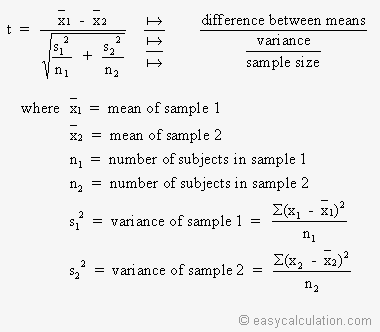

Rather, SAS will provide the p-value, the probability that T is more extreme than observed t. For the hypothesis test, however, it does not compute critical values associated with the given α, and compare the t-statistic to the critical value. SAS uses the stated α for the level of confidence (for example, α=0.05 will result in 95% confidence limits). Proc ttest data =name h0 = μ 0 alpha = α The 95% confidence limits around the mean are

We will test to see if the 1952 population from which the Dixon and Massey sample was gathered is statistically different, on average, from this recommended level. Many doctors recommend having a total cholesterol level below 200 mg/dl. Input Obs chol52 chol62 age cor dchol agelt50 $ Recall the data used in module 3 in the data file "dixonmassey." The general form for a confidence interval around the mean, if σ is unknown, isįor a two-sided 95% confidence interval, use the table of the t-distribution (found at the end of the section) to select the appropriate critical value of t for the two-sided α=0.05. We can also calculate a 95% confidence interval around the mean. Note: The shaded area is referred to as the critical region or rejection region. Using the significance level of 0.05, we reject the null hypothesis if |t| is greater than the critical value from a t-distribution with df = n-1. Using the significance level of 0.05, we reject the null hypothesis if z is greater than 1.96 or less than -1.96.
 We choose an α = 0.05 significance level. Where μ 0 is a pre-specified value (in our case this would be 3,410 grams). The population from which the data is sampled is normally distributed. For example we might know that the average birth weight for white babies in the US is 3,410 grams and wish to compare the average birth weight of a sample of black babies to this value. Many non-parametric test statistics, such as U statistics, are approximately normal for large enough sample sizes, and hence are often performed as Z-tests.A one sample test of means compares the mean of a sample to a pre-specified value and tests for a deviation from that value. Z-tests are employed whenever it can be argued that a test statistic follows a normal distribution under the null hypothesis of interest. Although there is no simple, universal rule stating how large the sample size must be to use a Z-test, simulation can give a good idea as to whether a Z-test is appropriate in a given situation. When using a Z-test for maximum likelihood estimates, it is important to be aware that the normal approximation may be poor if the sample size is not sufficiently large. If the population variance is unknown (and therefore has to be estimated from the sample itself) and the sample size is not large ( n μ 0, it is upper/right-tailed (one tailed).įor Null hypothesis H 0: μ=μ 0 vs alternative hypothesis H 1: μ≠μ 0, it is two-tailed. Therefore, many statistical tests can be conveniently performed as approximate Z-tests if the sample size is large or the population variance is known. Because of the central limit theorem, many test statistics are approximately normally distributed for large samples.
We choose an α = 0.05 significance level. Where μ 0 is a pre-specified value (in our case this would be 3,410 grams). The population from which the data is sampled is normally distributed. For example we might know that the average birth weight for white babies in the US is 3,410 grams and wish to compare the average birth weight of a sample of black babies to this value. Many non-parametric test statistics, such as U statistics, are approximately normal for large enough sample sizes, and hence are often performed as Z-tests.A one sample test of means compares the mean of a sample to a pre-specified value and tests for a deviation from that value. Z-tests are employed whenever it can be argued that a test statistic follows a normal distribution under the null hypothesis of interest. Although there is no simple, universal rule stating how large the sample size must be to use a Z-test, simulation can give a good idea as to whether a Z-test is appropriate in a given situation. When using a Z-test for maximum likelihood estimates, it is important to be aware that the normal approximation may be poor if the sample size is not sufficiently large. If the population variance is unknown (and therefore has to be estimated from the sample itself) and the sample size is not large ( n μ 0, it is upper/right-tailed (one tailed).įor Null hypothesis H 0: μ=μ 0 vs alternative hypothesis H 1: μ≠μ 0, it is two-tailed. Therefore, many statistical tests can be conveniently performed as approximate Z-tests if the sample size is large or the population variance is known. Because of the central limit theorem, many test statistics are approximately normally distributed for large samples.







 0 kommentar(er)
0 kommentar(er)
